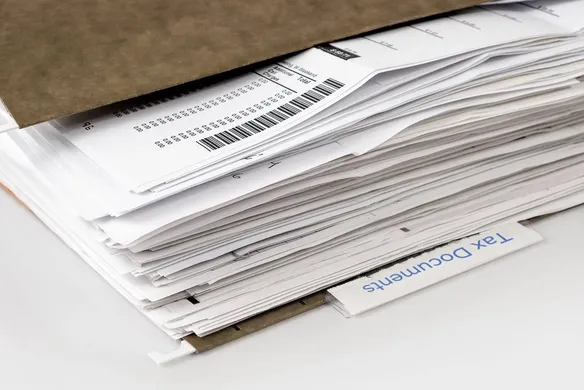Table of contents
Superannuation is the money you pay to your employees to help them save for retirement. Superannuation can seem like a tangle of red tape so we’ve created this guide to help you navigate “super” for your business.
Super has recently come under the spotlight with the banking royal commission, uncovering issues like fees for no service and underperforming super funds. Reforms are expected in 2019 but regardless of the integrity of industry, superannuation is a mainstay of the Australian economy.
Designed to build the wealth of Australian workers outside of the pension, it’s up to employers to make super payments on top of your employees’ wages.
What is superannuation?
As explained above, Superannuation is the money that you pay to your employees to help them put money aside for retirement. Super was set up by the government to provide people with an additional income stream to the pension and is compulsory in Australia.
What is ‘super guarantee’?
Superannuation guarantee (also known as SG) is the minimum amount you must pay your employees. It’s currently 9.5% of their earnings paid on top of wages. The rate was legislated to reach 12% by 2025 and will increase over time to account for Australia’s ageing population.
SG payments must go to a complying super fund. Most employees can choose their own fund but you’ll need to nominate a default fund to pay their contributions into if they don’t choose a fund themselves.
Do I have to pay superannuation for my employees? Who is exempt?
There’s a range of circumstances that determine if you have to pay super to your employees. The Australian Taxation Office (ATO) says that generally if you pay an employee $450 or more before tax in a calendar month, you have to pay SG on top of their wages. This also goes for employees under 18 and private or domestic workers (who must work more than 30 hours a week to qualify).
You must pay super whether or not the employee:
- Is full-time, part-time or casual
- Receives a super pension on annuity while still working – including those who who qualify for the transition-to-retirement measure
- Is a temporary resident – when they leave Australia, they can claim the payments you made through a ‘departing Australia superannuation payment’
- Is a company director
- Is a family member working in your business – provided they are eligible for SG.
You don’t have to pay super for:
- Non-resident employees you pay for work they do outside Australia
- Some foreign executives who hold certain visas or entry permits
- Employees paid under the Community Development Employment Program
- Members of the army, naval or air force reserve for work carried out in that role
- Employees temporarily working in Australia who are covered by a bilateral super agreement. You must keep a copy of the employee’s certificate of coverage to verify the exemption.
Some contractors will also need to be paid super depending on the nature of your working relationship and their work. You can use the ATO’s contractor tools to help you work out which types of contractors need to be paid super.
How much do I have to pay?
You have to pay the 9.5% superannuation rate of the employees ordinary time earnings (OTE). OTE is what the employee earns for their ordinary hours of work, including commissions, shift loading, bonuses, allowances and over-award payments. Overtime payments aren’t considered ordinary time earnings.
Here’s an example of what you need to pay:
Juan’s ordinary time earnings for the first quarter of 2018-19 (1 July – 30 September 2018) were $12,000. Juan’s employer paid his super contribution of:
$12,000 x 9.5% = $1140 This superannuation calculator is a helpful tool to figure out contribution amounts. There are many kinds of payments that are made to employees, for instance workers compensation or reimbursement for travel costs. See the ATO’s payments guide to find out whether the payments are considered part of ordinary time earnings.
You may decide to pay your employees a higher rate of superannuation as a benefit, or they may request to salary sacrifice to boost their super balance.
Salary sacrifice
A salary sacrifice contribution is a before-tax payment from an employee’s wage into their super fund. There can be tax advantages from this arrangement but there are limits to how much a person can voluntarily contribute before they lose tax concessions. You and the employee agree on the contribution rate or amount and you’re required to report the amounts on the employee’s payment summary.
When do I have to pay super?
You must pay super contributions from when each employee starts work and you have to pay at least four times a year by the ATO’s quarterly due dates. You can make the payments more often if you like as long as your total SG obligation for the quarter is paid by the dates below.
Quarterly due dates for Super Guaruntee payments
| Quarter | Period | Payment due date |
|---|---|---|
| 1 | 1 July – 30 September | 28 October |
| 2 | 1 October – 31 December | 28 January |
| 3 | 1 January – 31 March | 28 April |
| 4 | 1 April – 30 June | 28 July |
When a due date falls on a weekend or public holiday, you can make the payment on the next working day.
To use Juan as an example again, his SG contribution of $1140 for Q1 2018 must be paid by 28 October 2018. If you don’t pay contributions on time you may be charged the superannuation guarantee charge (SGC).
Can my employees choose their own Superannuation fund?
Your employees can nominate their own super fund by filling out the superannuation Standard Choice form, which you’re required to give them within 28 days of starting work. Employees are allowed to submit a Standard Choice form to switch their super fund at any time.
If they don’t nominate their own fund, employees’ super will go to a default fund with a MySuper option which you choose (be sure to let them know the default option within 28 days too). MySuper is a government initiative providing low-cost and simple superannuation products for employees. To ensure your default fund is complying, you can use Super Fund Lookup or get confirmation from trustee of the super fund.
Be sure to check industrial awards relevant to you in case you’re obliged to pay superannuation contributions into a specific fund.
How do I make Super Guarantee payments?
Even if you have to pay into multiple super funds, you’re able to make all your contributions in a single transaction.
If you turnover less than $10 million a year and have 19 or fewer employees you can use the ATO’s super clearing house. Otherwise, your default fund may have their own clearing house (and there are also other commercial options available) so speak with your fund to get started.
Superstream
Ensure your payments are reported in alignment with SuperStream, which is an initiative to standardise payments. You pay using EFT or BPAY and Superstream keeps the data in a standard format so it can be shared easily between employers, funds, service providers and the ATO.
Use this superannuation checklist to stay on track
- Pay super to all eligible employees
- Some contractors may be entitled to super
- Pay the right amount
- Currently you need to pay a minimum of 9.5% of their ordinary time earnings
- Pay on time
- Pay super quarterly by the due dates at least
- You need to lodge to pay a superannuation guarantee charge if you don’t pay on time
- Pay the right fund
- Pay super into your employee’s fund of choice
- If they don’t nominate a fund, pay it into your default fund
- Pay with SuperStream
- Check your clearing house options
- Keep accurate records
- Keep evidence to show you’ve met your obligations
- Don’t forget to include super contribution amounts on your employee payslips.
Nothing in this article constitutes legal advice – if you’re unsure about your superannuation obligations or payment methods, contact the Australian Taxation Office on 13 28 61 or visit their website.
![]()











